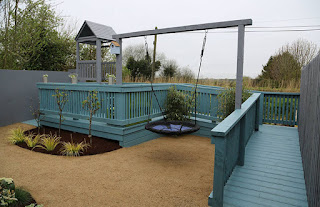Biophilia, the theory as developed by the biologist Edward O. Wilson, is defined as an innate and genetically determined affinity of human beings with the natural world. Now, we’ve all heard of horticultural therapy; its multiple benefits have been well researched and documented. That same research, however, might just be about to acquire a new focus.
As ageing populations begin to pose serious economic and cultural questions of developed societies the role of gardens in keeping the elderly happy and healthy seems to be, anecdotally at any rate, standing up to scrutiny. The economic imperative might just be about to force the western world to move the theme of biophilia and horticultural therapy out of the anecdotal arena and into the clinical.
Which is all fine but what’s it got to do with design? Well quite a lot actually; what we should be trying to do is design for life. When someone mentions the words family garden an image involuntarily pops into my head of the two parents and three children aged, say, 11, 8 and 4. What happens the garden when they move into adolescence, adulthood? Where do granny and grandad fit into the equation?
A family garden can be conceived and executed to deliver over the entire life of the family, not just a snapshot. Right now a family garden is almost by definition an exclusively child focused garden. It still can be, and more. It can still be future proofed.
 |
| Well Designed Elements Can Have Pan-Generational Appeal |
In design terms I am keen to develop the idea of universal accessibility and ease of use. What I mean by this is that more consideration be given to conceiving and executing elements which facilitate convenience and ease for the entire age spectrum while retaining design merit. My Bloom garden (based on the original garden which was over twice the size) was fully accessible and child focused but neither of those things was immediately obvious when you entered the space.
The garden contained a number of elements which were specifically designed to cater for the youngest boy who uses a mobility aid but which did not compromise the enjoyment of the able bodied members of the family. In fact the design of the water feature, for example, had at its core a consideration for the little guy but ultimately provided an experience for all the family beyond what a typical or expected design of such an element could provide.
And this is the key point; accessibility, ease of use and convenience for the aged and people with disabilities does not have to be a design compromise. It can enhance a design. The ramps in the original garden are another example; things which were conceived to facilitate the disability ultimately heightened the experience of every user.
Let’s call it multi generational design and by implication include accessibility and attractiveness of use for young and old. If you’re not in you can’t win; why talk about the benefits of horticultural therapy if the garden has nothing to attract the older generation or those in need of a nurturing environment in the first place? If all they see is garish play equipment and swathes of inaccessible planting areas that need maintenance?
It’s possible to bring together all these design imperatives under one solution; to take in people of limited mobility, the elderly, young children, those with autism, those from dysfunctional backgrounds, those requiring a therapeutic and nurturing environment.
Universal access; physical and emotional. Wouldn’t that be something?

Leave a Reply